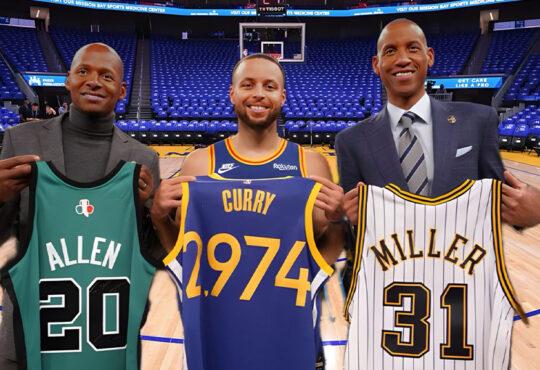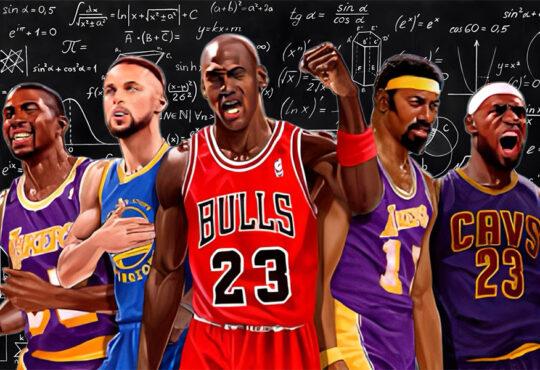
How much is the NBA worth?
How much is the NBA worth? The National Basketball Association (NBA) has become a global powerhouse, with total revenues estimated at over 8 billion in 2019. It’s no surprise that the NBA has seen substantial growth since its first season in 1946 when 12 teams played just 72 games throughout the entire year. But how did we get here? How much is the NBA worth and what factors have contributed to its immense success? In this blog post, we’ll explore all of these questions and more – diving deep into how many dollars make up the value of the world’s premier basketball league. Let’s jump right in.
Forbes annually reports NBA team values, and in 2022 the average valuation was an astonishing $2.86 billion! The Golden State Warriors topped all franchises with a value of over $7 billion while the New Orleans Pelicans had the lowest at just under 1.6 billion dollars. It appears that this past season marked another milestone for basketball fans everywhere as 2021-2022 saw record revenue earnings for America’s most popular professional sports association – crossing over into a whopping total worth of 10 BILLION DOLLARS!Television Rights Deals
The NBA has consistently been a leading force in the United States sports scene, drawing millions of viewers and generating substantial revenue through various channels. One of the primary sources of income for the league is its lucrative television rights deals, which have significantly contributed to the NBA’s overall value and growth.
In 2014, the NBA entered into a nine-year agreement with ESPN and Turner Sports, valued at a staggering $24 billion. This deal was a testament to the league’s popularity and its ability to attract large audiences. In 2017, the NBA further solidified its position by renewing its partnership with ESPN/ABC and TNT, extending the agreement for an additional four years through 2025. This extension increased the total value of the deal to $25.2 billion.
As a result of these massive television rights deals, NBA teams receive an impressive average of $2.6 billion per season just from TV rights alone. This substantial income stream has allowed teams to invest in facilities, player salaries, and other resources to maintain and improve the overall quality of the league.
The success of the NBA’s television rights deals can be attributed to several factors:
- Global popularity: Basketball is a widely popular sport with a massive fan base not only in the United States but across the globe. The NBA has successfully capitalized on this popularity by expanding its reach through international broadcasts and partnerships.
- Star power: The NBA has a long history of producing iconic players, such as Michael Jordan, LeBron James, and Kobe Bryant, who have transcended the sport and become global icons. These players have attracted millions of fans, driving up the demand for NBA content and increasing the value of television rights deals.
- High-quality production: The NBA has consistently invested in state-of-the-art broadcasting technology and high-quality production to deliver an engaging and immersive viewing experience for fans. This commitment to quality has helped the league maintain its strong viewership numbers and secure lucrative television rights deals.
- Digital innovation: The NBA has embraced digital platforms and streaming services, making it easier for fans to access content and follow their favorite teams. The league’s forward-thinking approach to digital media has expanded its reach and increased the value of its television rights deals.
Overall, the NBA’s massive television rights deals have played a crucial role in the league’s financial success and growth, allowing teams to invest in resources that ultimately benefit both the players and the fans. As the NBA continues to expand its global presence and adapt to the evolving media landscape, it is likely that the value of its television rights deals will continue to rise.
Sponsorship Deals
Sponsorships play a significant role in generating revenue for the NBA and contribute to the league’s overall value. High-profile companies such as Nike, Kia Motors, American Express, and Gatorade have formed strategic partnerships with the NBA, investing millions of dollars in marketing campaigns featuring players from all 30 teams. These partnerships not only boost the NBA’s financial standing but also enhance its global visibility and appeal.
In addition to these major sponsorships, numerous smaller deals with regional and local companies provide additional revenue streams for teams during each season. These partnerships may include in-arena advertising, promotional events, co-branded merchandise, and other marketing initiatives that benefit both the team and the sponsoring company.
Some key aspects of NBA sponsorships include:
-
Jersey sponsorships: In 2017, the NBA introduced jersey sponsorships, allowing teams to feature a small sponsor logo on their uniforms. This move opened up a new revenue stream for teams and provided increased visibility for sponsors.
-
Naming rights: Many NBA teams have sold the naming rights to their arenas, resulting in significant revenue. Companies pay millions of dollars for the privilege of having their brand associated with an NBA venue, which can lead to increased brand recognition and customer engagement.
-
Digital partnerships: The NBA has formed partnerships with various digital platforms and streaming services, creating new opportunities for sponsorships and advertising. These partnerships allow companies to reach a broader audience and tap into the growing market of online viewership.
-
Community initiatives: NBA teams often collaborate with sponsors on community outreach programs and charitable initiatives. These partnerships not only generate goodwill but also provide valuable marketing exposure for the sponsoring companies.
-
International expansion: The NBA’s global reach has attracted sponsorship deals from companies based outside the United States. These international partnerships help the league expand its fan base and increase its overall value.
The combination of major sponsorships with global brands and smaller, regional deals creates a diverse and robust revenue stream for the NBA. This income allows the league to invest in player salaries, facility improvements, and other resources that contribute to the growth and success of the NBA.
As the NBA continues to expand its presence worldwide and adapt to the ever-evolving sports and entertainment landscape, sponsorships will remain a crucial component of the league’s financial success and overall value.
Team Valuations
The final factor when calculating the worth of the NBA is team valuations. According to Forbes’ annual rankings of team values, which are based on factors such as revenue streams and stadium attendance numbers, the average franchise in 2020 was valued at $2 billion. This figure is nearly double what it was back in 2015 ($1.1 billion). This growth can be attributed primarily to the increase in media rights fees over time, as well as larger sponsorship deals becoming available due to teams having higher visibility thanks to their presence on social media platforms such as Twitter or Instagram.
The National Basketball Association continues to be one of the most profitable sports leagues in world history due to its lucrative television rights deals and sponsorship arrangements with big-name companies like Nike or Kia Motors. With each team now valued at an average of $2 billion (nearly double what it was just five years ago), it’s clear that there’s no shortage of money being poured into this ever-growing organization – making it one of today’s premier professional sports entities worldwide!
By understanding where all these revenues come from – TV rights deals, sponsorships, and team valuations – basketball fans can gain a better understanding of why their favorite league continues to grow year after year. The combination of an exciting product, flexible pricing, and access through new media channels has resulted in higher revenues and a more engaged fan base.
As the sport of basketball continues to grow in popularity around the world, it will be interesting to see how the NBA adapts its business model to maintain its position at the top. Potential areas of growth and adaptation include:
-
International expansion: The NBA has already made significant strides in expanding its global presence, with regular-season games held in countries like Mexico and the United Kingdom. Further international expansion could open up new markets and revenue streams.
-
Technological advancements: As technology continues to evolve, the NBA has the opportunity to leverage innovations in virtual reality, augmented reality, and other immersive experiences to enhance fan engagement and create new revenue opportunities.
-
E-sports: The NBA has already established its presence in the e-sports arena with the NBA 2K League. Expanding into other gaming platforms and leveraging the growing popularity of e-sports could create additional revenue streams.
-
Social media and content creation: The NBA has embraced social media platforms and content creation, allowing it to connect with fans and increase visibility. Continuing to innovate in this space can help the league maintain its relevance and attract new fans.
By staying ahead of the curve and adapting to the ever-changing sports and entertainment landscape, the NBA is well-positioned to continue its growth and maintain its status as one of the most valuable and successful sports leagues in the world.







